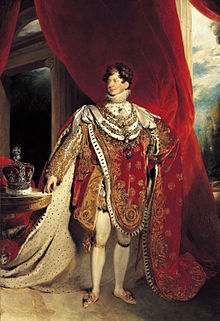|
England. South Wales. Conder Token
George IV as Prince of Wales: 1762-1830
1793 Copper Farthing Conder Token 22mm (3.72 grams)
Reference: D&H 27
SOUTH WALES FARTHING, Laureate head of the future king of UK, George IV right.
PRO BONO PUBLICO 1793, The Prince of Wale’s crest on shield, between sprigs of flowers.
The man featured may be a local Jewish banker and it could posthsibly be considered a Jewish token. Further research may be needed to explore the topic further.
You are bidding on the exact item pictured, provided with a Certificate of Authenticity and Lifetime Guarantee of Authenticity.
Conder Tokens, also known as 18th Century Provincial Tokens, are a form of privately minted token coinage struck and used during the latter part of the 18th Century and the early part of the 19th Century in England, Anglesey and Wales, Scotland, and Ireland.
The driving force behind the need for token coinage was the shortage of small denomination coins for everyday transactions. However, the demand was fueled by other factors such as the Industrial Revolution, population growth, and the preponderance of counterfeit circulating coins. Because the government made little effort to ameliorate this shortage, private business owners and merchants took matters into their own hands, and the first tokens of this type were issued in 1787 to pay workers at the Parys Mine Company. By 1795, millions of tokens of a few thousand varying designs had been struck and were in common use throughout Great Britain.
Collecting Conder tokens has been popular since shortly after they were first manufactured, resulting in the availability today of many highly preserved examples for collectors. The demarcation of what is or is not considered a Conder token is somewhat unclear; however, most collectors consider Conder tokens to include those indexed originally by James Conder or later by Dalton & Hamer.
 George IV (George Augustus Frederick; 12 August 1762 – 26 June 1830) was King of the United Kingdom of Great Britain and Ireland and King of Hanover following the death of his father, King George III, on 29 January 1820, until his own death ten years later. From 1811 until his accession, he served as Prince Regent during his father’s final mental illness. George IV (George Augustus Frederick; 12 August 1762 – 26 June 1830) was King of the United Kingdom of Great Britain and Ireland and King of Hanover following the death of his father, King George III, on 29 January 1820, until his own death ten years later. From 1811 until his accession, he served as Prince Regent during his father’s final mental illness.
George IV led an extravagant lifestyle that contributed to the fashions of the Regency era. He was a patron of new forms of leisure, style and taste. He commissioned John Nash to build the Royal Pavilion in Brighton and remodel Buckingham Palace, and Sir Jeffry Wyattville to rebuild Windsor Castle.
His charm and culture earned him the title “the first gentleman of England”, but his dissolute way of life and poor relationships with his parents and his wife, Caroline of Brunswick, earned him the contempt of the people and dimmed the prestige of the monarchy. He forbade Caroline to attend his coronation and asked the government to introduce the unpopular Pains and Penalties Bill in a desperate, unsuccessful attempt to divorce her.
George’s ministers found his behaviour selfish, unreliable and irresponsible. At all times he was much under the influence of favourites. He did not provide national leadership in time of crisis, nor act as a role model for his people. Taxpayers were angry at his wasteful spending during the Napoleonic Wars. For most of his regency and reign, Lord Liverpool controlled the government as Prime Minister. Liverpool’s government presided over Britain’s ultimate victory, negotiated the peace settlement, and attempted to deal with the social and economic malaise that followed. After Liverpool’s retirement, George was forced to accept Catholic emancipation despite opposing it. His only legitimate child, Princess Charlotte, died before him in 1817 and so he was succeeded by his younger brother, William.
|





 George IV (George Augustus Frederick; 12 August 1762 – 26 June 1830) was King of the United Kingdom of Great Britain and Ireland and King of Hanover following the death of his father, King George III, on 29 January 1820, until his own death ten years later. From 1811 until his accession, he served as Prince Regent during his father’s final mental illness.
George IV (George Augustus Frederick; 12 August 1762 – 26 June 1830) was King of the United Kingdom of Great Britain and Ireland and King of Hanover following the death of his father, King George III, on 29 January 1820, until his own death ten years later. From 1811 until his accession, he served as Prince Regent during his father’s final mental illness. 




